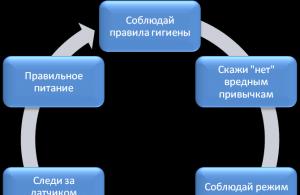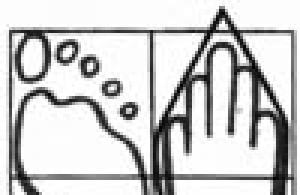70 percent of the car consists of metal elements. Metal is a durable and reliable material, which has the only drawback in the form of susceptibility to corrosion. This is his Achilles heel, causing car owners a lot of trouble.
Despite the advent of modern technologies in the production of cars, they could not completely defeat the corrosion of the metal. This is a real scourge of any used car older than 7 years.
The lower part is more prone to rust. vehicle, where the impact of external negative factors, acting as catalysts for corrosion processes, manifests itself most clearly.
The bottom, wheel arches, the lower parts of the doors, despite the additional protection, are weak points vehicle.
The vehicle body is in constant contact with environment. In the process of movement, its surface and especially the lower part can be damaged by various objects.
Stones, sand, rubble, branches and many other natural elements leave their mark in the form of scratches or.
With the advent of winter, the situation is even more aggravated.
High frosts, thick snow cover and ice on the roadway make road services use chemicals to remove ice from the road surface.
Often human lives and safety are at stake. Typically for de-icing pavement using a mixture of sand and salt. This is a real "hellish" mixture for body metal.
When it gets on the car body, it causes a strong catalytic reaction in damaged places where the metal was left without factory protection. Corrosion processes begin to develop rapidly in the area of damaged areas and in the spring they appear in the form of “spiders” or swelling of the paint.
Why fight corrosion?
A car for our man is an object of luxury and desire. The first car, like the first woman, is remembered for a lifetime. The range of emotions cannot be expressed in words.
The car should be pleasing to the eye and amuse the pride of the driver. If the body is covered with spots of ugly rust, then you can forget about the aesthetic component. Corrosion spoils and disfigures the appearance of the vehicle.
She's ruining individual elements car body. Repair of corrosion centers is troublesome and costly. The safety of the vehicle suffers in terms of violation of the integrity of the body and a decrease in its carrying capacity.
That is why corrosion is easier to prevent than to deal with the consequences of its vigorous activity. If the fish rots from the head, then the body rots from the bottom. This weak link in chain anti-corrosion treatment.
There is no need to save on preventive measures, because the elimination of the consequences will require significant material investments.
Types of anti-corrosion treatment of the bottom of the car
Science has stepped far forward in the field of anti-corrosion treatment of the vehicle body. Existing species rust protection products are highly effective and have a long-term effect.
Today, the following types of anti-corrosion treatment of the bottom of the machine can be distinguished:
1.Active protection
In the process of processing the bottom of the vehicle on its surface through the use of special anti-corrosion materials a protective layer is created that provides effective resistance to rust development for a long period of time
2.Passive protection
The insulating layer created on the basis of automotive mastics prevents damage to the surface of the bottom and the formation of rust pockets
3. Transformative protection
Areas of the bottom of the car affected by corrosion foci are treated by special means, transforming and .
The auto chemical goods market offers a lot of means to prevent the formation and destruction of corrosion centers. They differ in price and degree of effectiveness.
Anti-corrosion treatment of the bottom of the car can be done by hand or by the hands of specialists. The final word remains with the driver of the car. Often, sometimes there is simply no time to do the work on your own without outside help.
The following main stages of anti-corrosion treatment of the bottom of the machine can be distinguished:
- Thorough washing and drying of the vehicle with an emphasis on the bottom;
- The car is placed on a lift and freed from the wheels;
- Corrosion centers are removed with a metal brush;
- Closed with a film brake pads certainly not the same as, but nevertheless strong enough;
- Personal protective equipment (gloves, suit, goggles and respirator) are used;
- An anti-corrosion agent is applied to the bottom of the machine;
- Provides uniform distribution of funds over the entire surface of the bottom;
- The film is removed, the wheels are installed, and the vehicle is lowered from the lift;
- Do not leave the garage for 48 hours.
Conclusion
Savings on anti-corrosion protection is not the most good decision. The drivers who refused to carry it out regretted it very much in the future, but it was already too late. Experts recommend that after purchasing a used car, without delay, carry out corrosion protection the bottom of the car body.
Thank you for your attention, good luck on the road. Read, comment and ask questions. Subscribe to fresh and interesting articles of the site.
Corrosion is the main enemy car bodies, since it is almost impossible to cope with progressive through rust that has affected the power elements of the car, and replacing the body at a price is approximately equal to the cost new car. The most common material for body parts steel is a car, and, as you know, it is quite weakly resistant to corrosion, which is why it is very important to take care of reliable protection body. Before considering modern methods of anti-corrosion treatment of a body in more detail, it is necessary to understand the essence of the process.
What is metal corrosion?
Corrosion is a change in the structure of the metal, leading to its destruction. Corrosion processes occur most often either due to exposure to moisture, or due to the influence of various aggressive chemicals on the metal.
In this regard, the following types of corrosion are distinguished:
- dry;
- wet.
With dry corrosion, the outer surfaces of the metal lose their color and luster when interacting with atmospheric air, since an oxide film forms on the surface. This type corrosion is not dangerous, only the appearance deteriorates.
Wet corrosion - on the contrary, is very dangerous. Rapidly emerging rust pockets eventually eat through the metal to holes in the truest sense of the word. If such processes are not stopped in time, then the car body will very quickly become unusable, since the moisture that gets on the metal will again and again provoke the occurrence of rust localization sites.
The main danger of wet corrosion is that, due to the destruction of the metal, the body is weakened, the car begins to literally crumble.
Causes of rust:
- Storing the machine in conditions of high humidity and poor ventilation. For example, by regularly leaving a damp car in a damp, poorly ventilated garage for a long time, the owner runs the risk of seeing rust spots in vulnerable places in a couple of weeks.
- Untimely processing of chips, scratches and other mechanical damage paintwork. Bare metal is covered with a rusty film after a few days, and after a couple of weeks it may rust through and through. That is why all open areas must be treated with protective coatings as soon as possible.
- Irregular car wash. Especially in winter period many chemically active substances settle on the surface of the body, which often become catalysts for corrosion processes. Therefore, it is very important to wash the car not only from the outside, but also periodically clean the bottom, from adhering dirt and caustic inclusions.
Types of rust:
- Surface. It manifests itself in the form of separate islands in vulnerable areas of the body due to the destruction of the paintwork. Over time, it begins to gradually grow in width, involving more and more new areas in the process. At the initial stages of danger, this defect does not represent, however, over time, in the absence of adequate measures, it can develop into a more dangerous type of corrosion.
- Underfilm. One of the most dangerous types of corrosion, primary foci occur under a layer of paint, so it is almost impossible to detect them at the initial stages without proper experience. Over time, under-film corrosion affects the deep layers of the metal and turns into a through one.
- through. The final stage of rust. Through holes of various sizes are formed in the body, which grow in width very quickly.
Most often, corrosion processes occur in potentially vulnerable areas of the car. These include:
- thresholds;
- arches;
- wings;
- the lower parts of the doors;
- bottom;
- spare wheel compartment;
- skirts.
Often, rust pockets occur in friction points, for example, along the contour of the windshield seal, the attachment points of moldings, the joints of the wings and the hood, door hinges, etc. Cars with a sunroof often begin to rust from the roof, as the drainage pipes become clogged along the contour the hatch begins to accumulate moisture.
No matter how well the car is primed and painted at the factory, rust will still occur over time, since domestic conditions exploitation can hardly be called favorable. That is why for all machines, without exception, the only way to avoid early rust is anti-corrosion treatment. Moreover, even fully galvanized foreign cars should be processed, since the zinc layer, experiencing constant mechanical damage, gradually collapses, exposing metal unprotected from rust.
Anti-corrosion treatment - types and frequency
Anti-corrosion treatment of a car is a set of measures, the main purpose of which is to significantly increase the resistance of the metal to rust by treating the surface with special moisture-resistant substances. During this procedure, all internal cavities are processed, special composition the bottom is covered, produced additional protection welded joints, auxiliary protective elements are installed, such as mudguards, lockers.
There are many types of anti-corrosion treatment, all of them can be conditionally divided into three groups:
- complete, all body elements are subject to processing;
- partial, only potentially vulnerabilities are processed;
- repeated, regularly carried out after a certain period after complete processing.
The frequency of anti-corrosion treatment depends largely on the conditions in which the machine is used. Typical recommendations are as follows - immediately after purchase, it is recommended to perform a full anti-corrosion treatment, and then re-apply every five years.
When especially adverse conditions, for example, the car is operated on the roads of the metropolis, which are actively sprinkled with salt, or the car is used for commercial purposes and has a very high mileage, treatment should be carried out every two years, or even more often. In addition, in some cases, an unscheduled anti-corrosion treatment, for example, after an accident or when buying a non-new car.
It is best to perform a similar procedure in the warm season, after a carefully carried out pre-training. Moreover, when implementing such a set of measures, it is recommended to use only certified materials, applying them in accordance with the manufacturer's technological recommendations. It is equally important to use a professional tool.
Materials and tools for anti-corrosion treatment
For the preparation and application of special coatings, the following equipment is used:
- air compressor with hot air supply function, necessary for pre-drying the surface and hidden cavities;
- sprayer capable of supplying the mixture under high pressure. It is used for processing hidden cavities, as well as flat surfaces;
- sandblasting machine, needed to remove old coatings, clean the bottom, as well as eliminate the initial foci of rust;
- a grinder is used for the same purposes, but it is less preferable to use it, since it removes too large layers of metal, and is also practically useless when cleaning complex surfaces;
- washing equipment for contactless washing.
Materials for anti-corrosion treatment, depending on the field of application, can be divided into the following groups:
- for internal cavities;
- for external cavities:
a) for the bottom and wheel arches;
b) for outside thresholds, arches, skirts, bottom of wings and doors;
The range of such products is more than large, however, when choosing, it is very important to make sure that all materials are compatible with each other, since very often a new product does not lie on the old coating. In addition, it is important that the anticorrosive agent has good water-repellent properties and is not afraid sun rays and low temperatures.
Do-it-yourself anti-corrosion treatment of a car
Many motorists probably wondered - how to make anti-corrosion treatment of a car on their own? It turns out that for this it is necessary to carry out the following not particularly complicated chain of actions:
- Removal of old coatings. If the car has already been processed before, then it is necessary to remove the old coating, otherwise it will not be possible to achieve good adhesion of the anticorrosive to the metal. It is best to remove the old layer with a sandblaster, if one is not available, then with a manual grinder or with metal bristle brushes. It is also necessary to carefully treat the place affected by corrosion, namely, remove the rust mechanically, and treat the surface with a special converter and cover with a layer of acid soil. At through corrosion it is necessary to cut off the damaged areas and weld in patches, or to change the entire element.
- Washing. At this stage, it is necessary to thoroughly wash the car using special detergents. Wash desirable hot water under pressure, contactless.
- Drying. Dry the surface after washing warm air temperature 60-70 degrees Celsius, dry should be until completely dry, Special attention should be given to hidden cavities.
- Covering with a protective layer. The first step is to blow out all the hidden cavities with a special composition, you need to blow it out under pressure (recommended pressure is 6-8 atmospheres), so that the mixture evenly covers the entire surface and penetrates even into hard-to-reach places. After that, you can process the bottom and wheel arches airless way. It is recommended to apply a layer up to 300 microns thick, otherwise the composition will not adhere well. It is necessary to process the bottom very carefully so as not to inadvertently stain the rubber parts of the suspension, sensors, wiring, threaded connections and other elements.
- Cleaning drainage holes. When coated with anticorrosive, very often the holes for ventilation and water drainage are clogged, which is why they need to be cleaned with a wooden stick.
- Final drying. It is recommended to dry the car for at least a day. In addition, for another 10 days it is not recommended to wash the body and actively use the car.
Summing up, we should focus on the fact that the anti-corrosion treatment of the body - required condition to ensure many years of trouble-free operation of the car, so you should not neglect such a set of measures.
A modern factory anticorrosive agent quite effectively protects the body from corrosion. But nothing lasts forever. To keep iron in good condition protection needs to be updated. In addition, competent processing will help to slow down the corrosion process that has already begun for a long time.
Underground
In addition to the visible wear of the lower part of the body from the constant "sandblasting" and road reagents, corrosion of the internal cavities is inevitable. Welded seams and rolled joints in the door panels and trunk lid are also at particular risk. The trouble with such zones is inferior priming and staining even in the factory.
The corrosion process is noticeably accelerated in hidden cavities. Due to poor ventilation, moisture and dirt accumulate there mixed with road reagents, forming an electrolyte - a corrosion catalyst. And if its external manifestations are visible on the welded points of the bottom, on the welds and in the places where the panels overlap, then everything inside is much worse.
| The drying time of the bottom after washing depends on the equipment available in a particular service. For example, two heat guns with a power of 24 kW, providing a flow of hot air with an intensity of 2500–3000 l / min, cope with the task in about half an hour. At the same time, they are sequentially moved under the car in order to fully dry the hidden cavities. The drying time of the bottom after washing depends on the equipment available in a particular service. For example, two heat guns with a power of 24 kW, providing a flow of hot air with an intensity of 2500–3000 l / min, cope with the task in about half an hour. At the same time, they are sequentially moved under the car in order to fully dry the hidden cavities. |
|
Before application, the bottom and hidden cavities of a middle-aged car are washed and dried. This procedure itself significantly delays the onset of serious corrosion, since it rids the surfaces of aggressive electrolyte.
To protect the body, two main methods of anti-corrosion treatment are used.
Canadian approach
In Canada, a humid cold climate prevails, which favors the appearance and development of corrosion. Therefore, it is Canada that is considered the legislator of the so-called ML-method of body protection, although it was invented in Scandinavia.
The method involves pouring ML-oils (analogues of the usual Movil and the popular Rast Stop tool) into the hidden cavities of the entire body through existing factory technological holes and drains. Penetrating compounds impregnate welds well and cover the inner surfaces with a film that reliably insulates from contact with air. The same materials cover the bottom from the outside.
The ML method is not demanding on the quality of body preparation and forgives a lot of mistakes when applying the composition. In the same Canada, the bottom is not fully washed, but only large pieces of dirt are knocked down. The ML oils used have excellent penetrating power and well impregnate surfaces and seams even under such conditions.
They can also be applied over any rust - corrosion inhibitors (retarders of a chemical reaction) are included in the composition. But to achieve the maximum effect, it is better to rinse the bottom and its hidden cavities completely.
The disadvantage of ML oils is their low mechanical strength. In hidden cavities, they last for years, and on open surfaces they are quickly erased.
Chemical manufacturers are developing and processing schemes for machines specific models. They indicate the factory technological holes and additional ones that are proposed to be drilled in order to fully fill all the hidden cavities. In fact, servicemen rarely make holes in the body - if only because the owners are often against it. In most cases, additional holes are not so necessary for full processing. By the way, these diagrams are useful for studying the structure of a particular body, especially when rare model.
SWEDISH ANSWERThe abbreviation ML stands for anti-corrosion compounds for hidden cavities of the car body, as well as the processing method. Behind these letters are two authors: the Swedish Automobile Association Motormannen and the ideologist of the direction Sven Laurin. At the end of the 50s of the last century, one of the specialized companies offered car owners a new service - complete bodywork using the ML method. Although for the first time this technology was tested 20 years earlier. The Swedish ancestry is explained by the difficult local climate, which accelerates the corrosion of iron. On a global scale, power engineers faced this problem when high-voltage masts began to be actively built in the country. Their tubular structures were rotting from within at a terrifying rate. It was then that Laurin proposed his own method - through existing or drilled holes, pour anti-corrosion oils into hidden cavities. Movil, Soviet analogue Swedish ML oils, got the consonant name by accident. This composition was developed much later by scientists from Moscow and Vilnius, the Russian and Lithuanian capitals, and gave the remedy a name. In those days, it was fashionable to invent funny abbreviations and abbreviations. |
old light
The second approach is European, more serious. In addition to cavities treated with ML oils on open panels bottoms and wheel arches are applied with solid (bituminous) protective compounds. This method is more demanding on quality preparatory work. It is important to fully wash the open bottom panels, otherwise the bituminous compounds will quickly peel off.
The main advantage of bituminous coatings is high mechanical strength. Their various types, for example, the composition for liquid fender liner or for bottom panels, are able to protect metal for a long time from external influence.
These covers are optional. They are applied in several layers, and films of this thickness are sufficient to reduce the vibration level of the panels. On some machines, the effect is more noticeable, on others - less. An important role is played by the subjective perception of the driver and design features car.Bituminous coatings can be applied to rust, but with reservations. If the corrosion is superficial, just in case, the affected area is impregnated with ML-oil and after that a solid composition is applied. With deeper layered rust, impregnation with an ML compound may not help. Moreover, the development of corrosion cannot be controlled, because bituminous coatings, unlike ML oils, are opaque. Therefore, the master in each case evaluates the degree of rust damage and the possibility of applying a bituminous coating on top of it.
For the treatment of the bottom with bituminous composition, the same restrictions apply as with ML oils. Bitumen, like ML oils, can be removed with solvents when it enters the outlet, but much more time and effort will have to be spent.
DANGEROUS ECONOMYThere are a huge number of companies on the market offering their anticorrosive compositions. All products are of comparable quality, but well-known players should be preferred, for example: Tectyl, Noxudol, Dinitrol, Waxoyl. Branded chemistry is not the cheapest, but it has been repeatedly tested. It is with her that specialized services work, which have seen the results of using products from dubious manufacturers. Poor-quality products do not protect, but kill the body. For example, the left ML oils, instead of deeply impregnating surfaces and seams, creating a protective layer, act the other way around. They have very low fluidity, clog drains, and also form a thick membrane film, under which corrosion only accelerates. And cheap bituminous compounds have an extremely low service life. Quickly drying out and cracking, they to some extent protect the body from mechanical stress, but not from corrosion. |
Election campaign
During year-round operation of the machine in major city, where roads are actively watered in winter, the first external signs internal corrosion appear after about five years or 100,000 km of run. The most economical way to significantly extend the life of the body is to wash the bottom and its hidden cavities every 50,000–70,000 km. In Moscow, this service costs 2000-3000 rubles.
Ideally, it is worth supplementing the first wash of the bottom with the treatment of its hidden cavities. Moreover, at the next visit, for example, after 50,000 km, it is no longer necessary to flush the internal cavities and refill them with ML-oil - it “lives” there for a very long time. Such complex processing will save a decent amount. For example, for 8000-9000 rubles they will fully wash the bottom, treat hidden cavities and apply ML oils to open panels.
This option is suitable for normal urban use. On open surfaces under such conditions, ML oils can withstand 20,000–30,000 km of run. And if the bottom is closed with plastic shields, the composition will last much longer. A combined approach is also possible. Unprotected and especially prone to "sandblasting" areas are covered with a bitumen composition. An owner who wants a long life for his car can "douse" it with ML oils every year over old coatings.
Processing with bituminous materials makes sense when operating in difficult conditions and very large annual runs. This option is suitable for off-road enthusiasts and owners of commercial transport as well as amateur racers. It is suitable for both used and new cars. The bitumen coating of the bottom, if not actively killed, lasts for five to seven years. That is, it is quite enough for the average period of owning a car. After the bituminous coating has worn out, it is partially cleaned off and a fresh layer is applied. A package of services, including washing, treatment of hidden cavities with ML oils and application of a bituminous coating on the bottom, is estimated at about 15,000 rubles.
The cost of protecting the body is comparable to spending on Maintenance machines - complex treatment with ML-oils and treatment with bituminous compounds cost as the first and second MOT, respectively. Usually it is enough to spend money on anticorrosive treatment only once or twice - these investments are repaid when the car is sold.
ONE BLOODBituminous materials for the protection of bottom panels and fender liner have a single base, but differ from each other, let's say, in additive packages. They are added to increase the mechanical strength of the coating in the zone of active external influence - for example, on the wheel arches. To do this, the base base includes a reinforcing filler - rubber crumb. Accordingly, such a composition will be more expensive. Such a coating can be applied to other parts of the body. Let's say, on the rapids, subject to strong "sandblasting" from the wheels. Manufacturers supply formulations for liquid fender liners in various containers and different consistency, but with the same characteristics. Thanks to this, services can use the most convenient equipment for working with them. Thick formulations are applied with a brush in several layers, and liquid formulations are applied with a spray gun or a euro gun. More viscous material can be diluted with a solvent to use any available equipment. |
We thank Antikor.rf for their help in preparing the material.
Road chemicals, along with rain and snow, accelerate the process of oxidation of the metal from which the car is made. Moscow is no exception in this regard. Most often, factory rust protection lasts only a few years, or even less. Experienced drivers are well aware that anti-corrosion treatment is a proven and effective method extending the "life" of a foreign car or a domestic car. You can order anticorrosive cars in the RB-group service. We will definitely make the body of your "iron friend" resistant to rust! The guarantee for that modern technology using such ultra-efficient materials as anticorrosive agents Noxudol and Mercasol (Sweden).
Advantages of the materials we use
machine depending on weather conditions, time of use and driving style can rust with varying degrees of intensity. However, the “pain points” of a car traditionally include the bottom, hidden cavities and welds. Before starting work, RB-group specialists carefully evaluate the condition of the body and other elements for a clear selection of an anti-corrosion agent. Compositions of Noxudol and Mercasol are recommended to treat not only used cars, but also new cars. The use of these materials allows:
- significantly increase the working life of the main vehicle systems (brake, fuel, suspension, etc.);
- treat with anticorrosive the most inaccessible places. The car body has a complex configuration, so there are many such places;
- save the thresholds and rear panels of the car;
- reduce the level of vibration and noise in the cabin;
- provide normal work lock mechanism and door hinges;
- reinforce wheel arches (liquid fender liner).
Anti-corrosion coating Noxudol and Mercasol slightly increase the weight of the car and last a long time.
The price of anticorrosive in our company depends on technical condition machine and its class.
The main stages of work on anti-corrosion treatment of a car
1. We carry out the preparatory process in several stages
Dismantling of fender liner, mud flaps, protective covers. The car body is thoroughly washed with high pressure water. With the help of a foaming agent, we apply a washing solution (shampoo), which we wash off after a while, allowing the solution to soak in and work. Drying the car body with heat guns, the duration is 3-4 hours. Blowing out the body compressed air, to drive the remaining moisture from the seams and sinuses. Details that cannot be processed are covered.


2. Car cavity treatment
The treatment of hidden car cavities is carried out with preparations based on ML oils. These preparations contain a large amount of corrosion inhibitors, special oils and waxes, have high ability to the displacement of moisture, easily penetrate into all cavities and microcracks, effectively impregnate corrosion (rust), forming an elastic film with good adhesion.
All hidden cavities of the car body are processed with ML compounds: frame, floor reinforcements, welds, sills, spars, inner parts of the arches, etc.



3. Processing the bottom and wheel arches of the car
We apply an anti-corrosion preparation for the bottom of the car using a pump for high-viscosity materials, with the ability to create a pressure at the outlet of the nozzle of about 400 atm. Anti-corrosion agent for the bottom of the car has a high wear resistance, contains solvents based on bitumen, wax and resins. Provides high mechanical resistance and the ability to restore the coating in case of damage. Provides long lasting protection.



Prices for anticorrosive treatment in Moscow
The cost of services is presented in the table below. Call our service for more information current promotions and discounts!
| Vehicle type | The cost of anticorrosive treatment, rub. | |||||
| Cavity treatment Noxudol 700 | Car body treatment (bottom, arches, hidden cavities on the bottom of the car) Noxudol 900, 700 | Complex processing (bottom, arches, hidden cavities) Noxudol 900, 700 | Liquid fenders (anti-noise, protective treatment of wheel arches) Noxudol Auto-Plastone | Anti-noise, protective treatment of the bottom of the car Noxudol Auto-Plastone | Anti-noise, protective, complex car treatment (bottom, arches, hidden cavities) Noxudol 700 or Noxudol Auto-Plastone | |
| Cars, up to 4 m | 4 000 | 11 000 | 13 000 | 5 000 | 9 000 | 17 000 |
| Cars, from 4 m | 5 000 | 12 000 | 14 500 | 5 000 | 10 000 | 19 000 |
| Crossovers, SUVs, minibuses | 5 000 | 14 000 | 16 500 | 5 000 | 11 000 | 21 000 |
For consultations, calculation of cost and registration call by phones.
Weather conditions greatly affect the bearing part of any passenger car- body. And if you do not timely carry out work aimed at anti-corrosion protection of the body, especially the bottom, then it may subsequently rot. Therefore, many drivers, especially beginners, are interested in how to treat the bottom of the car from corrosion with their own hands.
When anti-corrosion treatment of the car, special attention should be paid to the treatment of the bottom, since harmful effect the environment affects it the most.
There are only three main methods for processing the bottom of a car: passive, active and transformative. In fact, all these methods come down to one thing - applying a protective layer to the metal surface. But there are also significant differences between them. By the way, we partially touched on this topic in the instructions for anti-corrosion treatment of cars.
Passive method of processing the bottom of the car
With the passive method of processing, various kinds of anti-corrosion mastics are applied to the bottom of the machine. The basis of these mastics is most often bitumen, but there are also mastics based on rubber or resin. Additional elements such compositions are often fibrous substances and graphite.

Such anti-corrosion mastics for bottom treatment are not in short supply, they can be purchased at any car market.
The most common products are Bituminous Mastic, Shale Mastic, Bitumen Anticorrosive, Bituminous Autoanticorrosive and Epoxy Autoanticorrosive.
- Before treating the bottom with anti-corrosion mastics, it must first of all be properly washed and prepared for applying a protective layer.
- Before applying anticorrosive, the bottom is treated with some kind of primer.
- The mastic itself is heated before application to improve its fluidity.
Apply anticorrosive, as a rule, in several layers. Such a protective composition prevents contact of the metal with the environment, thereby preventing its corrosion. In addition, a thick layer of mastic to some extent allows you to further improve the sound insulation of the car.
To disadvantages passive method processing can be attributed such a moment that if the bottom of the car is not preliminarily well dried, then moisture will remain under the protective layer of anticorrosive, which will destroy it from the inside.
Active method of processing the bottom of the car
Active means of protecting a car from corrosion include such a tool as Movil. This drug is a fairly popular tool for anti-corrosion treatment of a car.

In most cases, Movil is used to treat the internal surfaces of the body, but it can also be used to process the bottom of the car.
Movil good in that it not only isolates the metal surface from atmospheric action, but also conducts a chemical fight against corrosion that has begun, since it contains an inhibitor. In addition, Movil contains special additives that displace moisture from the metal surface.
If the bottom is processed with Movil, then it is not necessary to remove the old mastic, since it goes well with all types of anti-corrosion agents and, interacting with them, compacts them and provides good protection bottoms against corrosion.
When processing a car with Movil, it is important to take into account the fact that it contains components that have a destructive effect on any rubber products. Therefore, its contact with protective seals and covers should be avoided.
Transformative method of processing the bottom of the car

There are cases when the car owner did not make a protective treatment of the bottom of the car in time and traces of corrosion appeared on it. In this case, the most effective processing will be in a transformative way.
This method consists in the fact that the places where traces of rust have appeared must be treated with agents that chemically convert corrosion into protective soil. The composition of such funds very often includes acid (orthophosphoric acid is most often used).
On the Russian market There are many preparations of rust converters, both imported and domestically produced.
The most common rust converters among domestic motorists are " chain mail" And " Tsinkar". They chemically clean corroded metal and convert the rust into a water-insoluble zinc phosphate protective layer.
After processing the bottom surfaces damaged by corrosion, it will be necessary to apply protective mastics or Movil to it.
It is impossible to say exactly what is the best way to process the bottom of the car. Choice protective composition depends on the condition of the body and, in particular, the bottom of the car. In one case, it will be enough to treat it with anti-corrosion mastic, and in the other it will be necessary to carry out comprehensive protection, which includes all three processing methods.
Video: the better to treat the bottom of the car from corrosion









